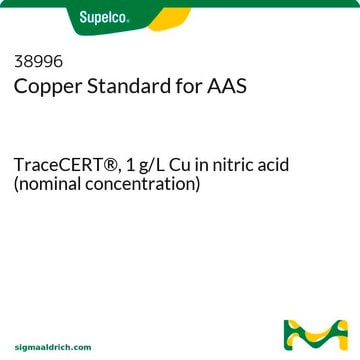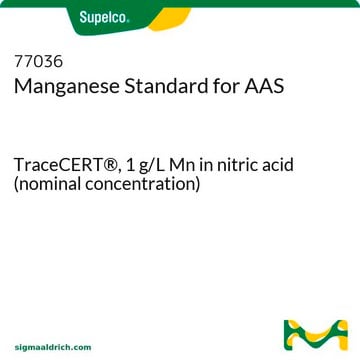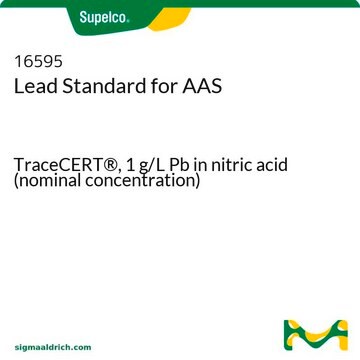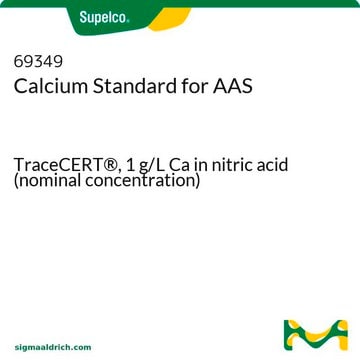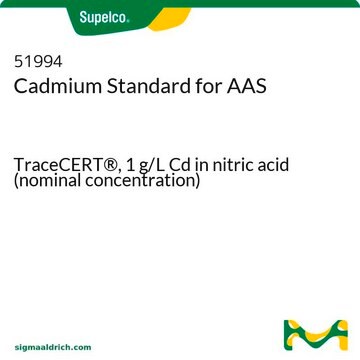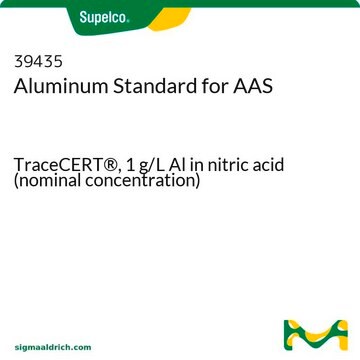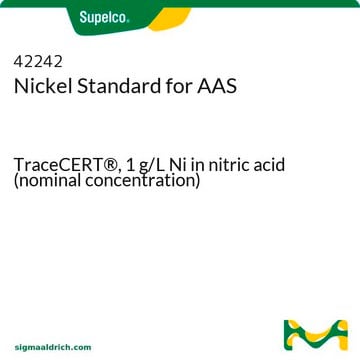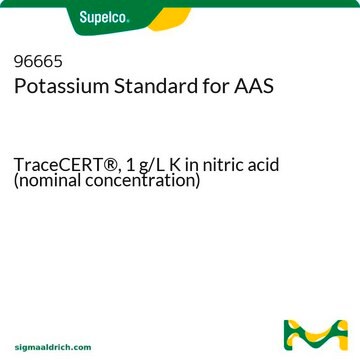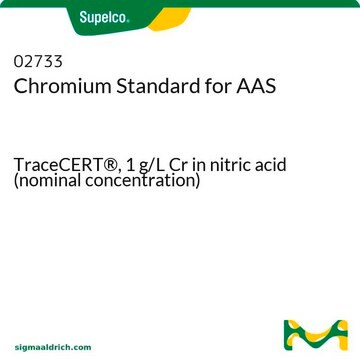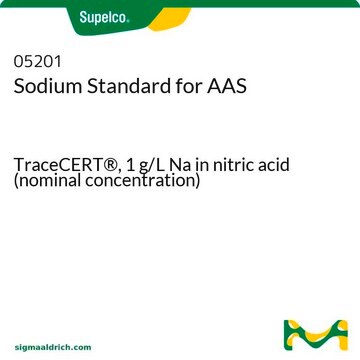16596
Iron Standard for AAS
TraceCERT®, 1 g/L Fe in nitric acid (nominal concentration)
Sinónimos:
Iron Standard for AAS (1 g/L Fe in 2% nitric acid)
About This Item
Productos recomendados
grado
certified reference material
TraceCERT®
Nivel de calidad
Línea del producto
TraceCERT®
concentración
1 g/L Fe in nitric acid (nominal concentration)
técnicas
AAS: suitable
ICP: suitable
aplicaciones
industrial qc
pharmaceutical
formato
single component solution
Descripción general
Please visit ISO certificates and Site Quality Self-Assessments to access the current certificates of accreditation.
Download your certificate at http://www.sigma-aldrich.com to view certified values, including uncertainty and expiry date.
Aplicación
Nota de análisis
Otras notas
Información legal
Palabra de señalización
Warning
Frases de peligro
Consejos de prudencia
Clasificaciones de peligro
Eye Irrit. 2 - Met. Corr. 1 - Skin Irrit. 2
Código de clase de almacenamiento
8B - Non-combustible corrosive hazardous materials
Clase de riesgo para el agua (WGK)
nwg
Punto de inflamabilidad (°F)
Not applicable
Punto de inflamabilidad (°C)
Not applicable
Equipo de protección personal
Faceshields, Gloves, Goggles, type ABEK (EN14387) respirator filter
Choose from one of the most recent versions:
¿Ya tiene este producto?
Encuentre la documentación para los productos que ha comprado recientemente en la Biblioteca de documentos.
Los clientes también vieron
Nuestro equipo de científicos tiene experiencia en todas las áreas de investigación: Ciencias de la vida, Ciencia de los materiales, Síntesis química, Cromatografía, Analítica y muchas otras.
Póngase en contacto con el Servicio técnico